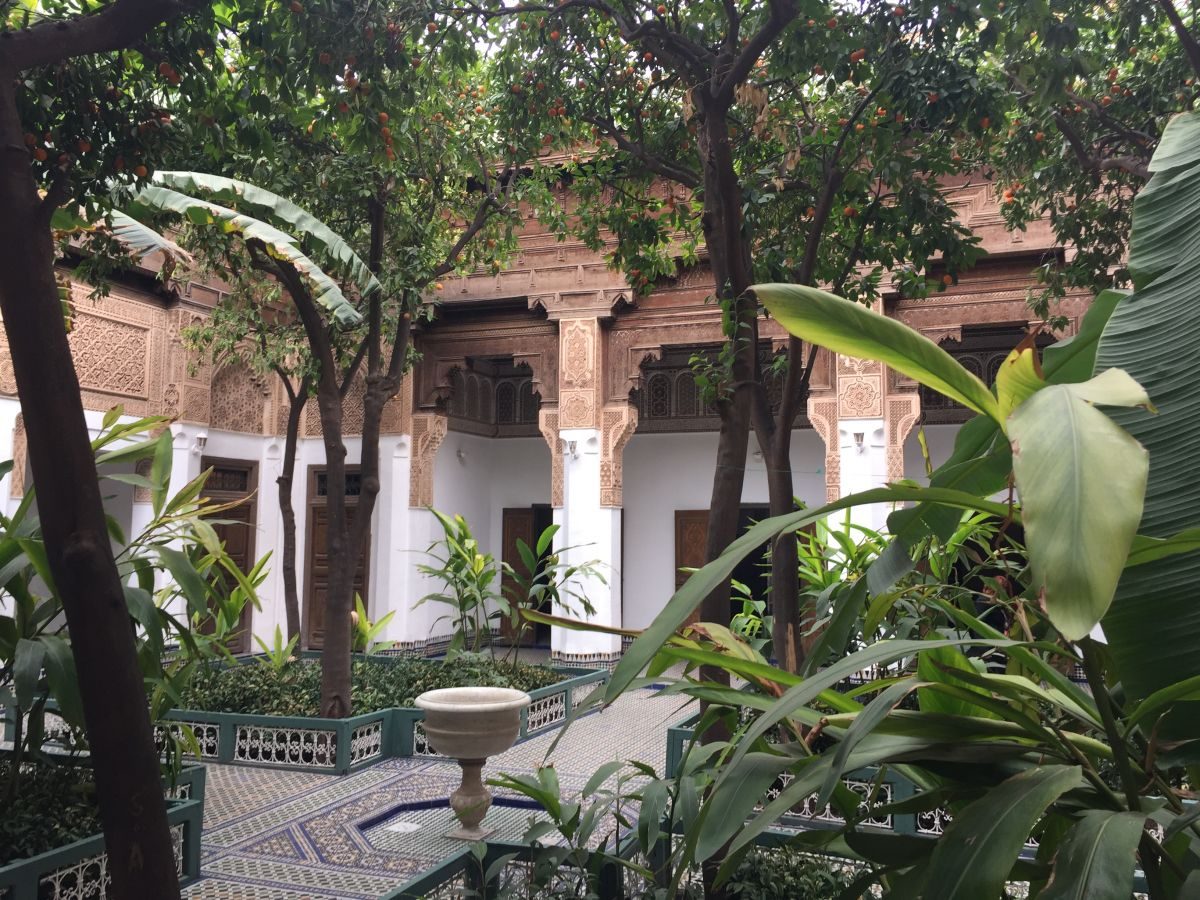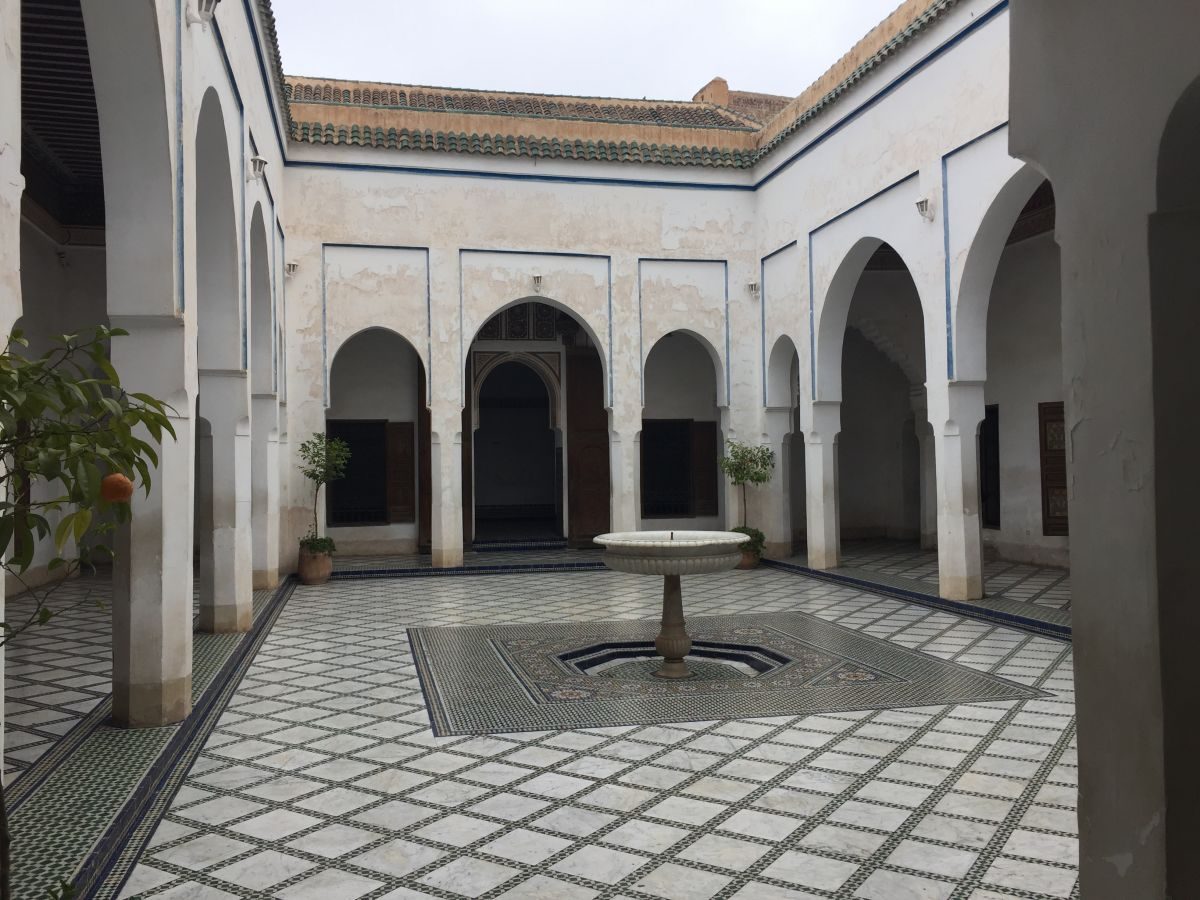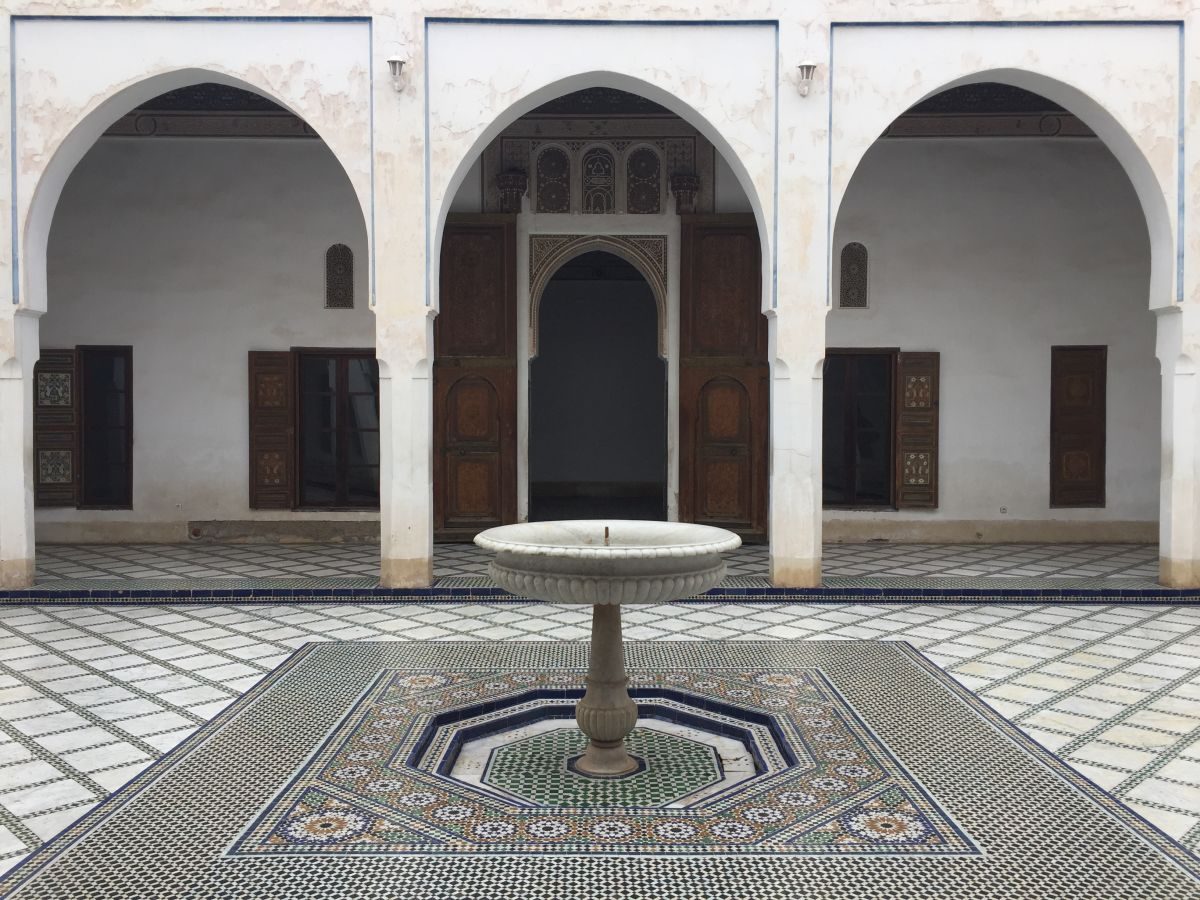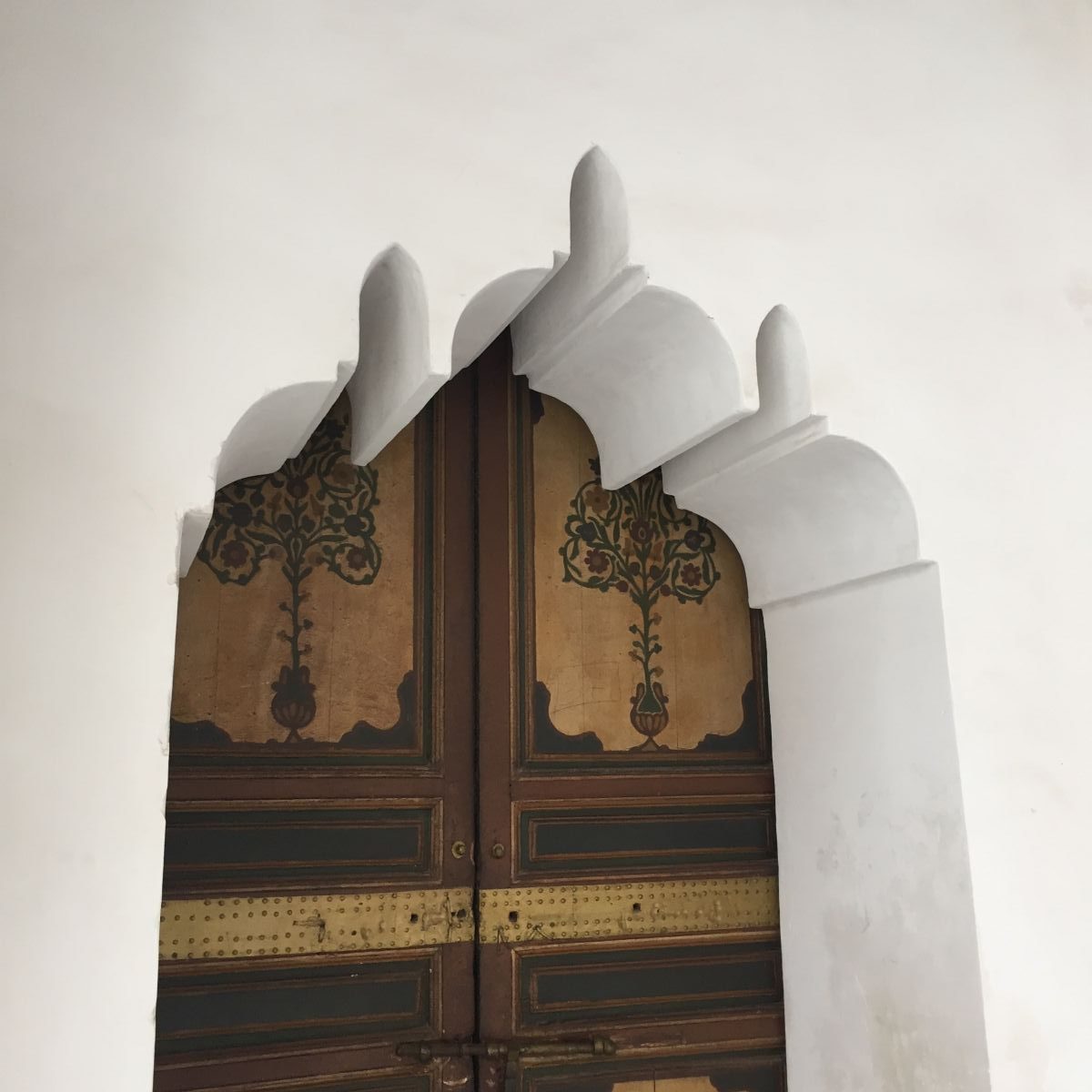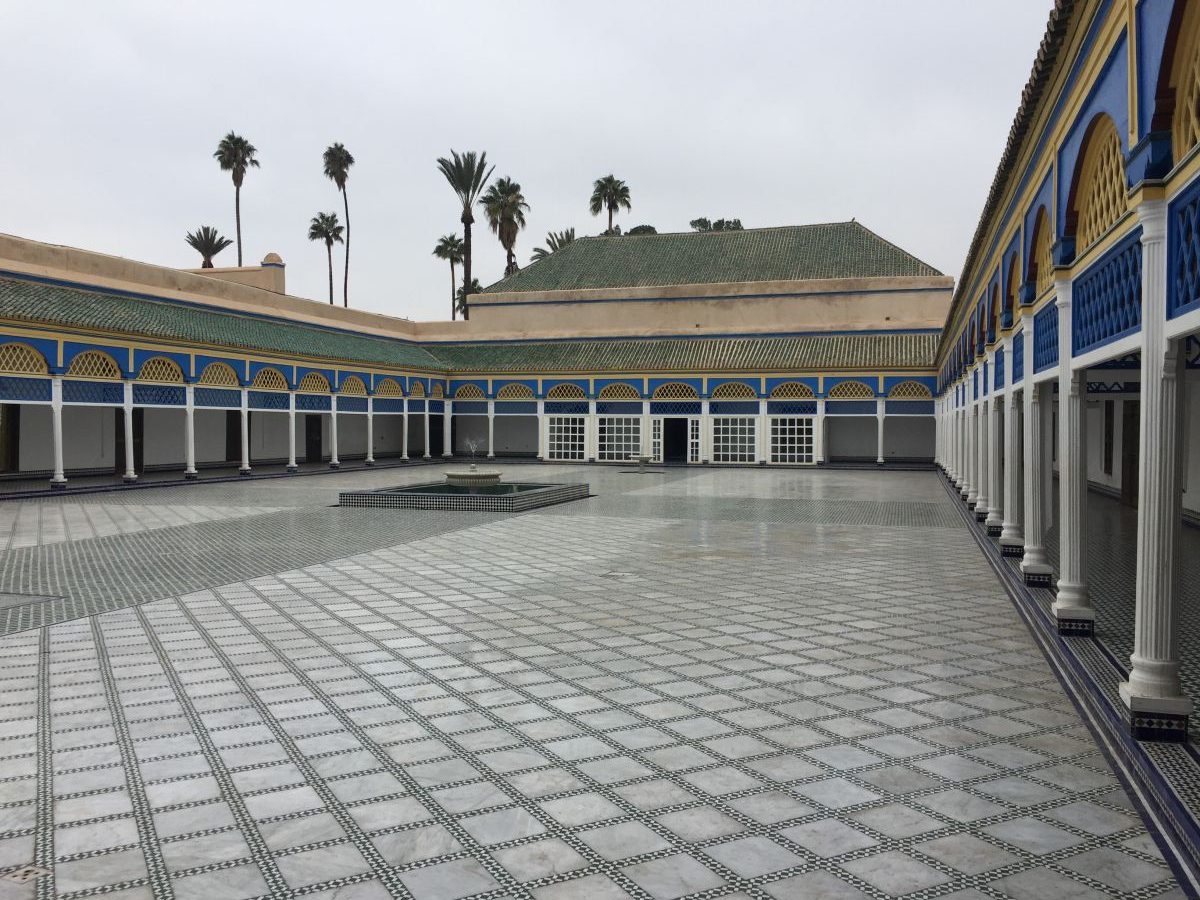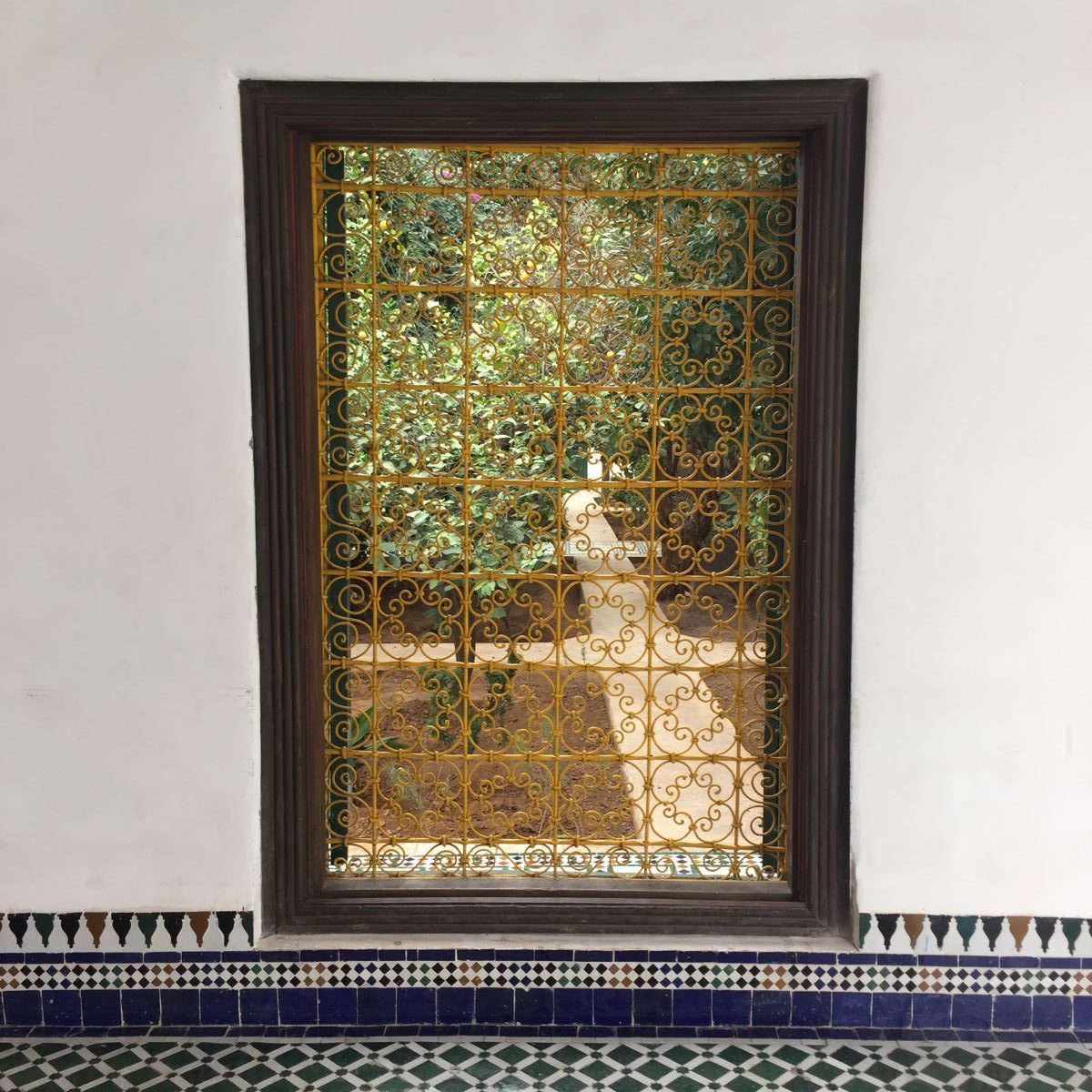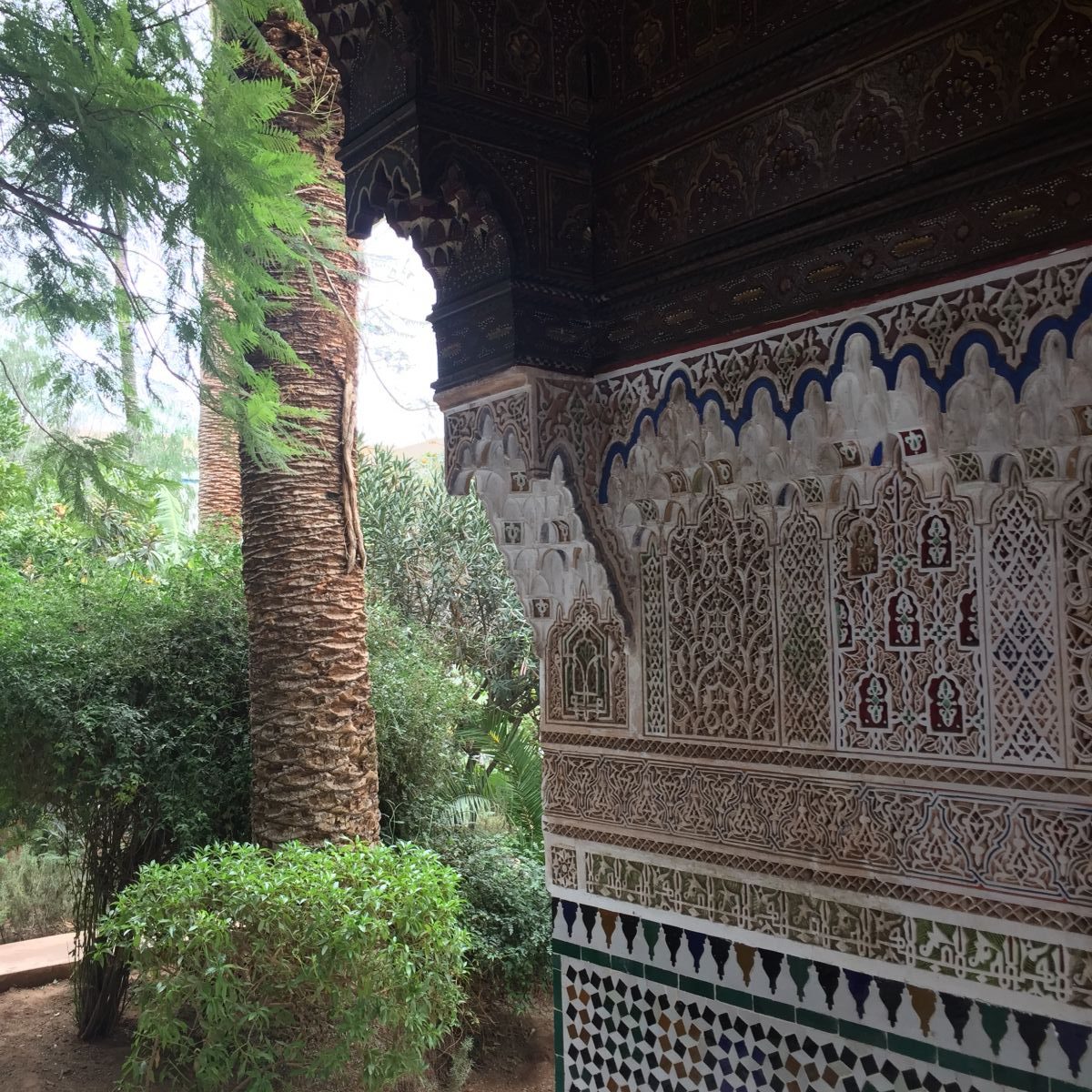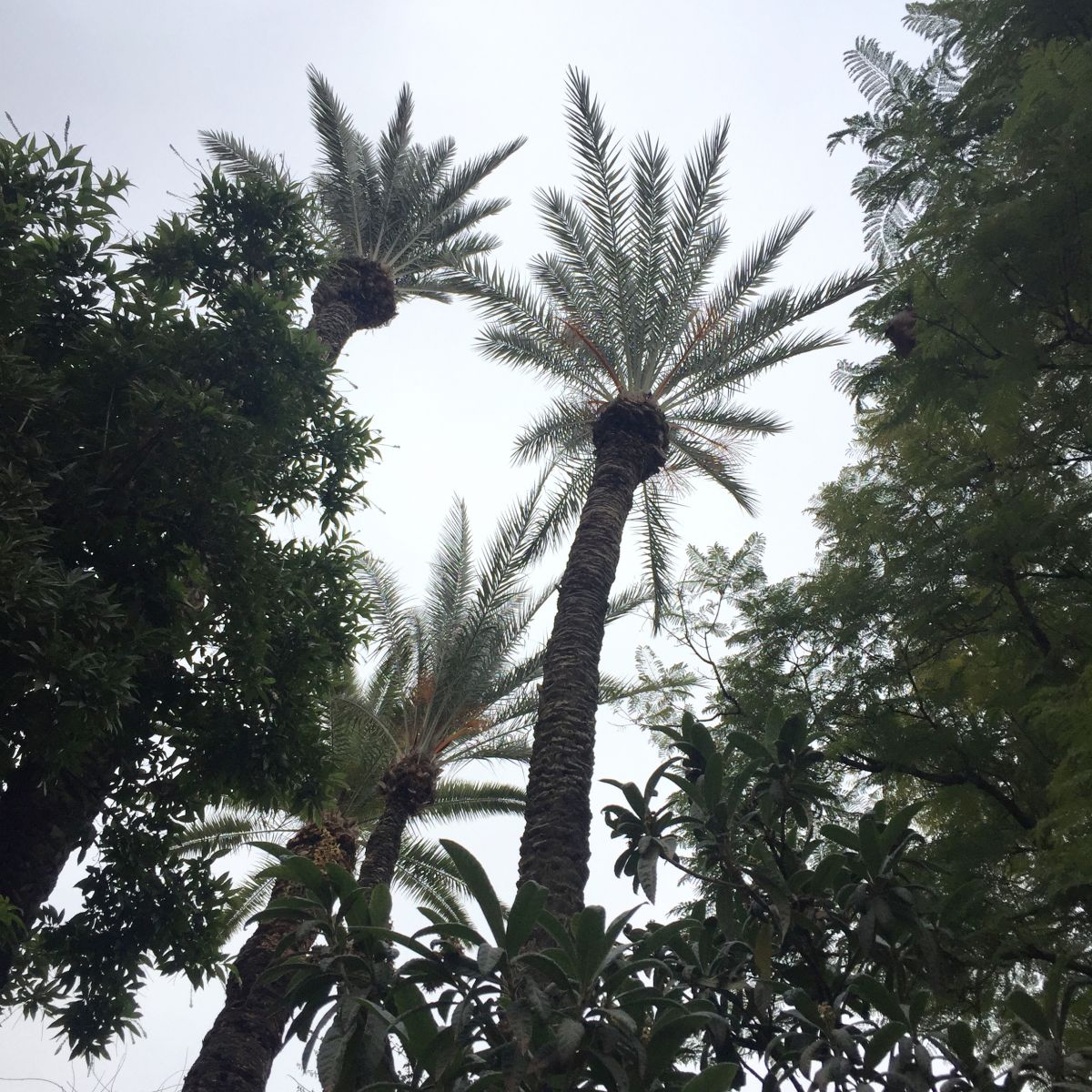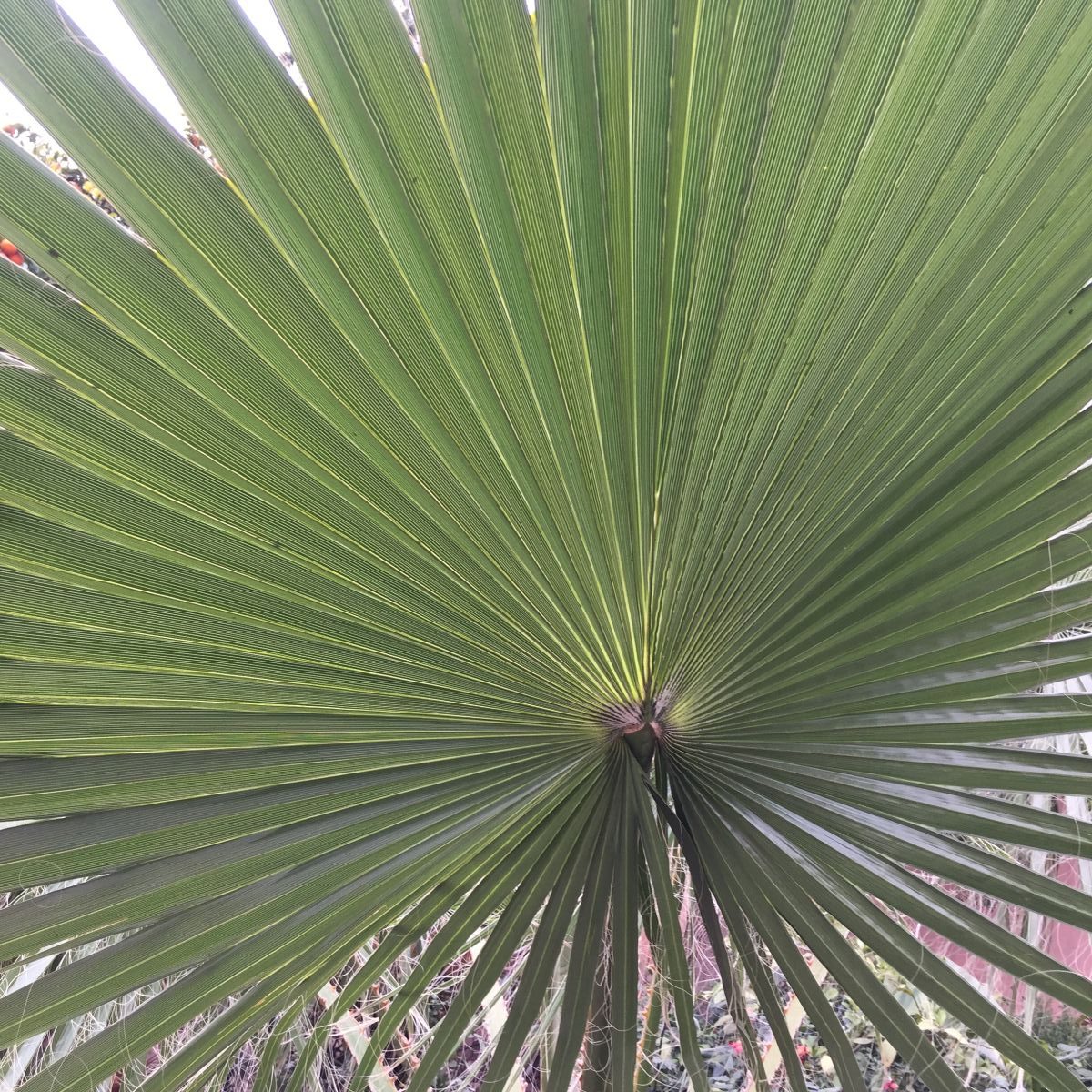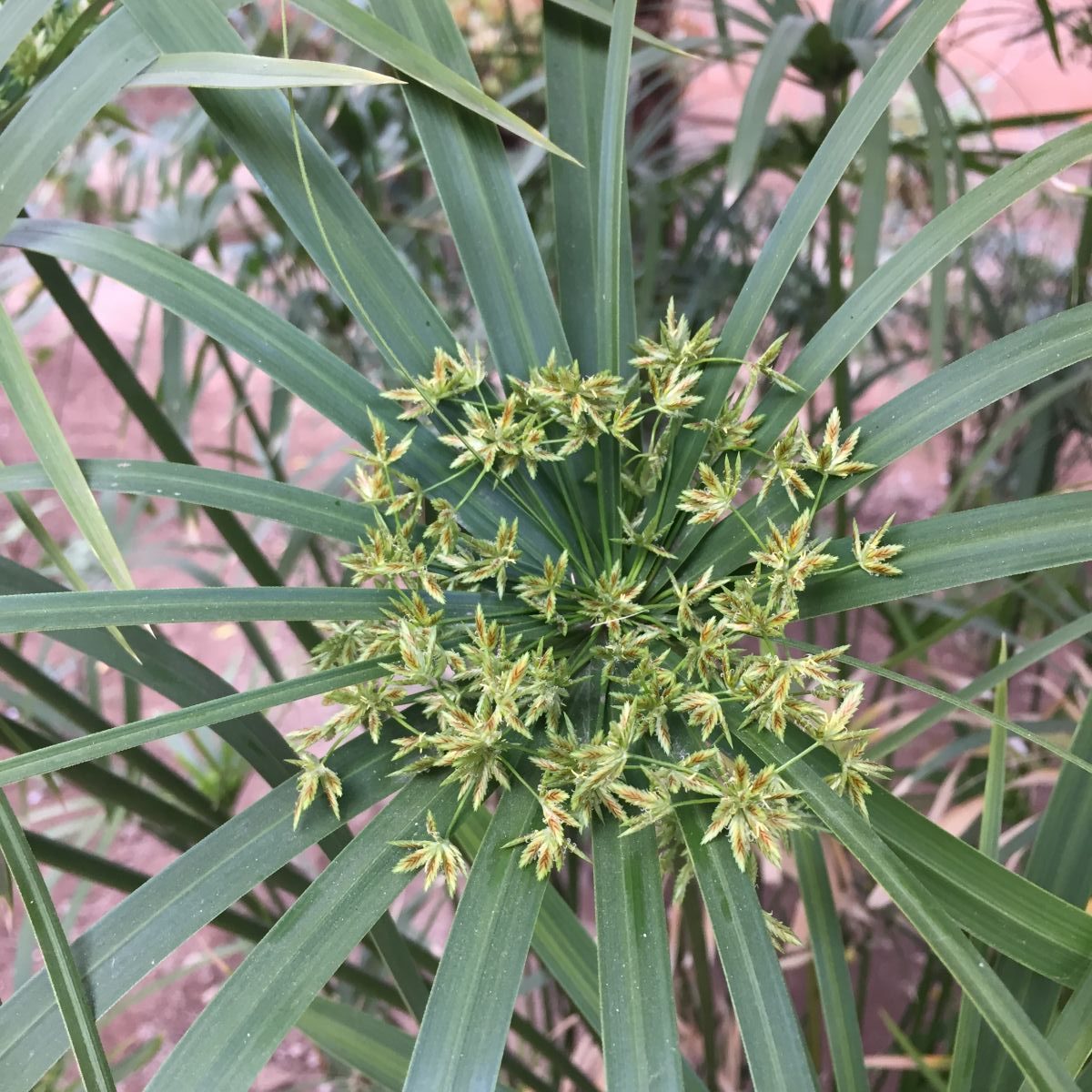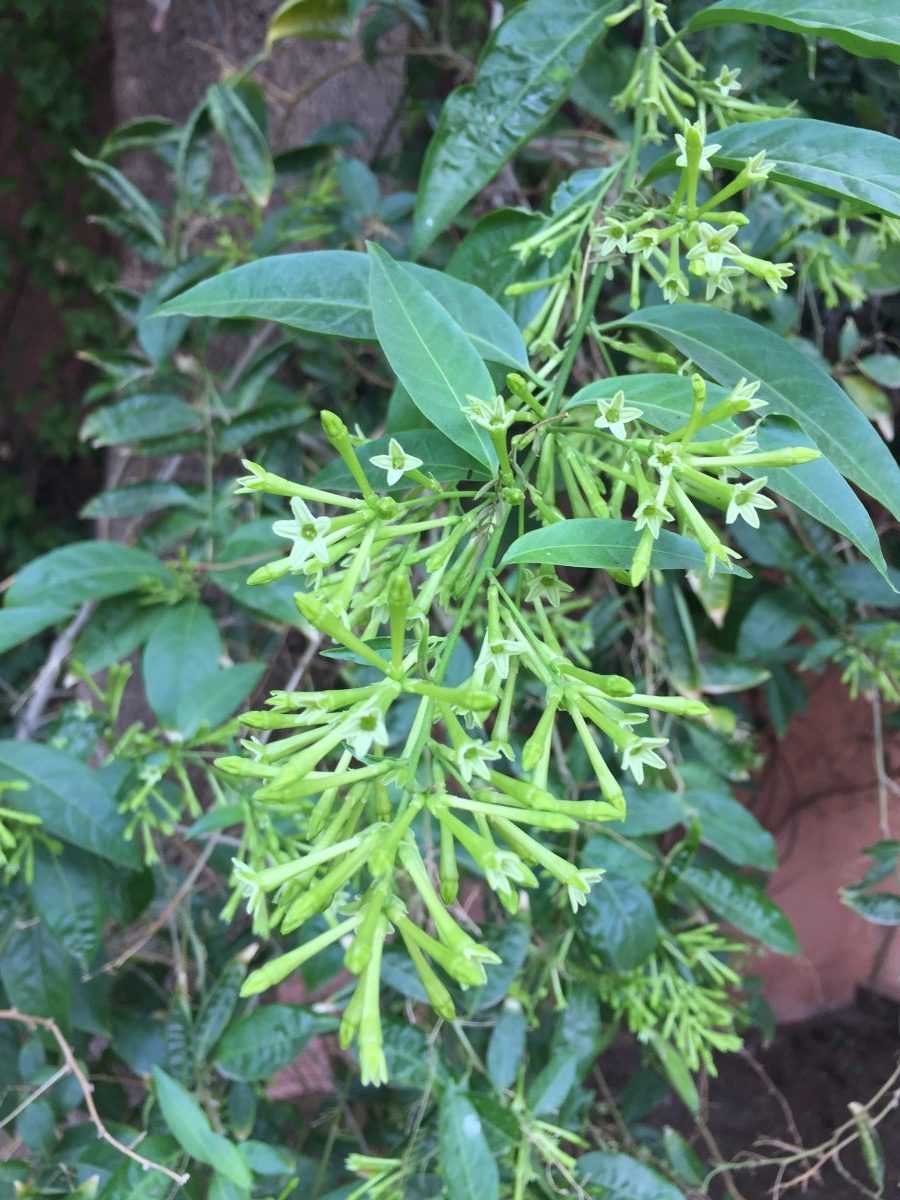The second oldest garden we visited was by far the most visually arresting of designs. It is immaculate and inspirational. Yet it is marred by a multifaceted dark past which I find hard to ignore. Built around 1867, you will never forget a visit to the beautiful Bahia Palace.
Marrakech is special. The old parts of the city are a repetitive maze of hectic Souks and dusty backstreets.
You never know what is lying behind each of the walls. Behind one could be an overworked donkey gasping for water and behind the other, opulent paradise.
Bahia Palace, like the streets outside, is a maze of interconnected rooms and corridors all surrounding the main spaces of the building: the outdoor, inner courtyards. Because in a country where outside is warmer than inside most of the year, why not have an open roofed living space.
Entering the building, you walk into the first Riad (above), which is also the newest. It’s breathtaking. Tiled floors, formal symmetrical quincunx layout with a water fountain and pool in the centre, plant beds and loggia with wooden carved ceilings and arches.
This courtyard alone is one of the most beautiful gardens I’ve ever been to. The tiles and carved woodwork set off by the lush, large leaved foliage is perfection and the busy bartering of the Souks feel like miles away.
The second courtyard is different. Simpler. Still beautiful but less warm. Slightly less welcoming and more an area to be traversed. More suited perhaps for parties and events where the people have room to move.
Its simplicity of design actually gives it more sense of space and a chance to admire the shapes of the arches, fountain and tile work.
It also has the most delicious ‘icing’ effect doors. Like someone has taken a giant cookie cutter to the perfect white walls.
Walk through the doors and the inner chambers are decked with such detailed tile work and mosaics.
The third courtyard is by far the largest.
Impressive by its scale, this is apparently the main hub of the palace and again, the marble tiled floor must gleam in the sunshine. Bold simplicity is what makes it so impressive. The towering palms in the distance really help to make the scene.
As interesting as this was, my eye was drawn to the left of the courtyard and a series of windows and doors leading to the palace’s largest Riad.
Heading through the doors and it’s immediately evident that this is like the first Riad only much larger.
The detail that is seen on every wall is mind-boggling. Set off by the huge palms, orange trees and other productive plants (now mainly for ornamental value). This would have been used by the kitchens for food.
The detail within this area and the rest of the palace really is something else. When looking at the tropical foliage against the stone and wood carvings there is nothing more exotic and exuberant. Plants and art working in harmony as they should.
It was admiring the artwork that I had to check myself. In a country of such poverty, this palace had clearly benefited from the extremely low salaried workers who built it. This sits uncomfortably with me. The last time I felt like this was standing in the Vatican in Rome where such wealth in artistry and skill is locked up by so few.
It’s a personal conflict of morals that doesn’t detract from the beauty created by those people. Bahia Palace is magical and a must visit in Marrakesh. I have to say some elements will stay with me in my own designs, I really did love the design with the plants.
And what plants – it is the green that truly made the place feel so otherworldly.
The thing that strikes me about Marrakesh, now I reflect back on it, is that its residents have nailed the inside/outside spaces urban gardens in UK cities like London are striving for.
Where we’re turning our back walls into huge glass panels and bi-fold doors looking into our tiny urban yards, the Marrakesh residents have enveloped their gardens with the houses.
Riads, the courtyard gardens, often form the central focus of the house, as if the house is giving the garden a protective hug. High walls creating intimate privacy.
It’s quite hard to get our heads around the fact the garden room in Marrakesh houses is literally a room that’s a garden. People have to cross their garden every time they walk from room to room – it is often the hallway.
I wonder what we can learn and bring to the UK from this take on the garden. It certainly makes me wish I had an inner courtyard to carve and tile! 🙂
Read the rest of my Marrakesh diary
- Marrakesh (part one): beautiful and bonkers, on the urban garden trail in the red city
- Marrakesh (Part Two): blown away by ancient Islamic garden design at the El Badi Palace
- Marrakesh (this page): Islamic tiled courtyards at Bahia Palace
- Marrakesh (Part Four): Jardin Majorelle
- Marrakesh (Part Five): Le Jardin Secret by Tom Stuart-Smith


